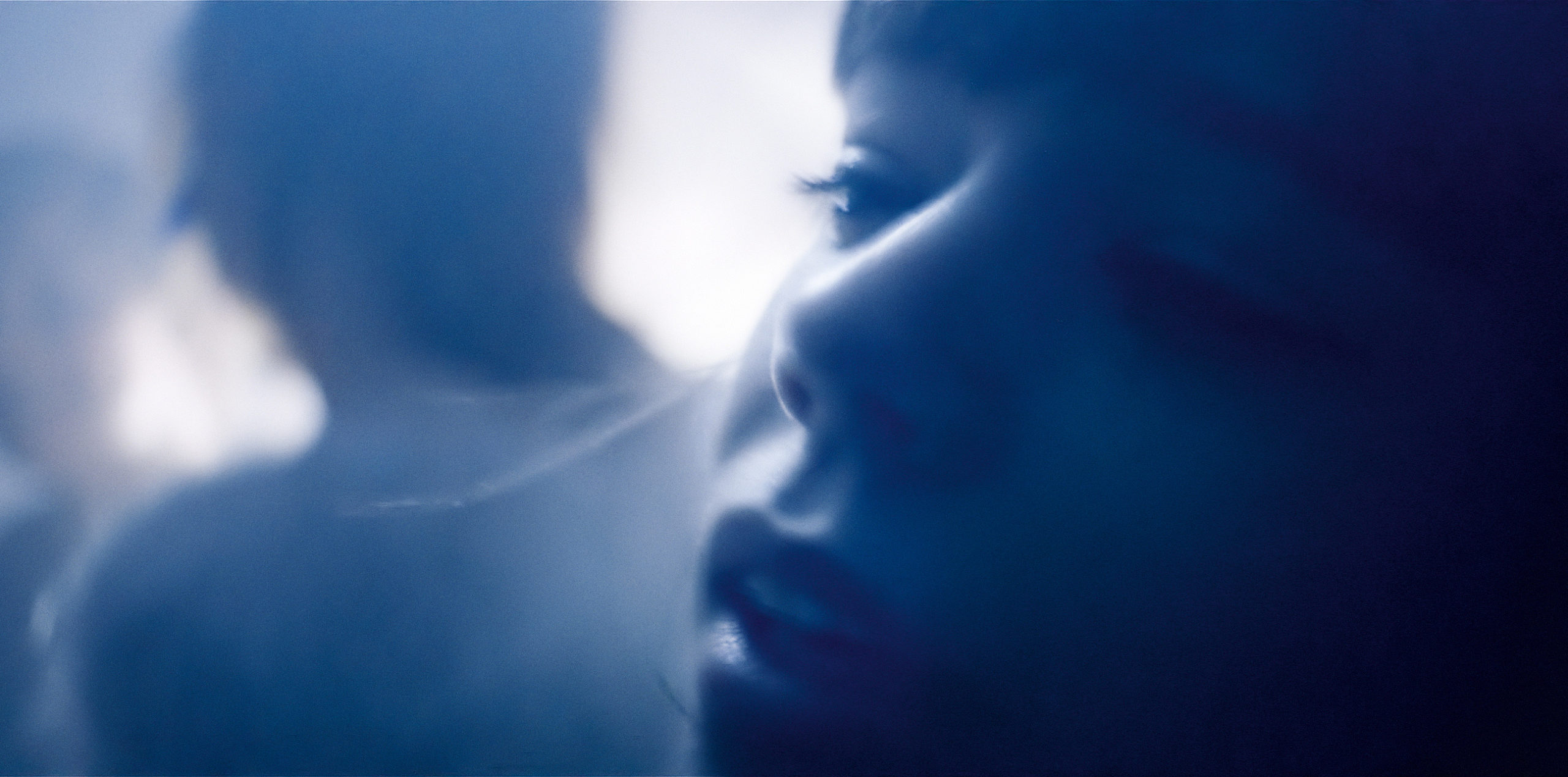From Dr Nessa Johnston (Edgehill University)
Raving, clubbing and partying: the scene on screen
After a whole year in which it’s been illegal to gather socially and clubs have been shuttered and silent, it’s inevitable that we might turn to a screen to provide some sort of surrogate for the experience of getting together somewhere dark, loud and anonymous to party. Film and TV rarely captures what it’s like to party, to let go, to move your body and surrender to dance music’s beat at a rave or an underground club. Perhaps the gap between the lived experience of being there and the limitations of screen and soundtrack is too great. Raving is a set of sensations that refuse to fit comfortably into the straightjacket of film and TV’s codes and conventions; the heat of the crowd, the bassline rumbling in your stomach, and the spinetingling climax of the breakdown, defy the limits of representation. While film and TV, as time-based audio-visual media, demand every moment be poured into a funnel of narrative significance, and the gaze of the camera scrutinises every moment, in contrast, raving is letting go of scrutiny and abandoning time itself.
Most of the time, film and TV just gets it wrong. The choice of music is usually wrong; even a filmmaker with good musical knowledge doesn’t always know their way around electronic dance music and its myriad scenes and subcultures, let alone knowing their acid house from their minimal techno, or their dubstep from their grime. And given the conventions and technical limits of the film soundtrack, it won’t sound right anyway: not loud enough, not truly part of the world of the film. A cringe-inducing, yet necessary feature of party scenes in films is the not-quite-loud-enough music mysteriously lowering in volume just in time for an intelligible exchange of dialogue to take place. Raves, club scenes and parties in film and TV tend to be trite and vacuous, forgettable crowd scenes that act as background for some kind of more significant action. The other key reason why TV and films get it wrong is because fundamentally rave culture is a subculture, and it’s therefore much easier to get it wrong than right. Affiliates of any subculture will dine out on every error, not only the music but also any dialogue, as well as the look of the club and the clubbers, the clothes, the haircuts, the moves. Subcultures require insider knowledge to function as they do, therefore to capture a subculture on film or TV is to run the risk of revealing the insiders’ shared secrets to outsiders. The wrong-ness is not limited to fiction film and TV either. Documentaries often have a slightly pompous ethnographic gaze, observing the hedonism, yet removed from it, coldly detached from the action.
This is an entirely personal, entirely subjective playlist, and a very Eurocentric one. It combines my research interests in sound-image relations, sonic mediation, ‘liveness’, music scenes and subcultures on screen (all of which I explore in my forthcoming book on The Commitments (1991) for the Routledge Cinema and Youth Cultures book series), with a more personal obsession with electronic dance music, clubbing and DJing. It’s one that has evolved from personal conversation, simple and regularly repeated questions, such as, why can’t films capture clubbing/raving? What is the most accurate cinematic depiction of a club or a rave? These questions have been of renewed interest during lockdown, as the scene has moved online and platforms such as United We Stream, Club Quarantine, and Stream the Scene attempt to recreate some sort of shared experience at home by synchronously streaming DJ sets while drumming up excitement and some kind of shared purpose via Zoom, Twitch or Discord servers. For anyone not enamoured with ‘the scene’ as I am, it might seem odd that a set of cultural practices that revolve around dancing to recordings of music (as opposed to live performance) actually needs some sense of temporal simultaneity, perhaps to make up for the lack of spatial co-presence. In this context, the films and television programmes listed here are more a form of memory work, a chance to revisit a past experience, debate ‘accuracy’, or hopefully enjoy a taste of many future opportunities to party together again.
Victoria (2015, Sebastian Schipper)
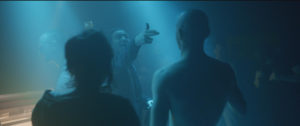
While this Berlin-set crime thriller is best known for apparently having been shot in a single take, it is noteworthy here for its remarkable opening, which introduces us to the film’s central character through a haze of dry ice, strobe lights and moving bodies and the thump of Burn With Me by DJ Koze. An intense (audio)viewing experience, remarkably evocative of basement techno clubs in Berlin.
Available to rent or purchase on multiple streaming services including YouTube
Human Traffic (1999, Justin Kerrigan)
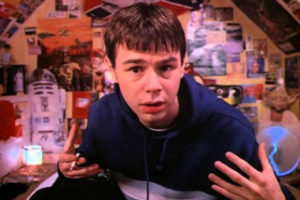
Too obvious? Cardiff set and shot, this film epitomises the ‘edgy’ side of ‘90s Cool Britannia cinema as much as Trainspotting, and is as preoccupied with drugs as it is with music. Yet more than 20 years on, its stylistic success is even more apparent. Ditching any attempt at dreary British docu-realism, instead it’s all lairy big beat, bright colours, dreamy Steadicam, and intense direct address to camera by shockingly fresh-faced iterations of John Simm and Danny Dyer.
ED Note: In an interview with Mix Mag, Justin Kerrigan confirmed a sequel in the works.
Available to stream on Amazon Prime, UK (free with subscription).
Spaced “Epiphanies” (Series 1, Episode 6) (1999, Edgar Wright)
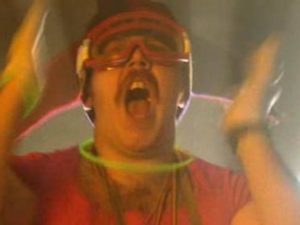
From the same vintage as Human Traffic is Channel 4’s surreal and gloriously geeky sitcomSpaced. One of the great joys of this episode, “Epiphanies”, is its narrative simplicity. After a visit from motormouthed acquaintance Tyres, whose tendency to aggressively monologue is repeatedly emphasised by an underscore of urgent beats, Tim (Simon Pegg), Daisy (Jessica Hynes) and their friends are persuaded to go clubbing, then they get ready to go clubbing… then they go clubbing.
And that’s it. Yet this half hour is packed with a string of bizarre yet recognisable motifs and moments: one of my favourites is Daisy’s determined half-dancing during an interminable wait in the cloakroom queue.
Available to stream on All4, UK/Republic of Ireland)
Teenage Diaries “Between Two Worlds” (1992, BBC)

This remarkable BBC documentary was shot on video by Rachel, a 13-year-old New Age Traveller, providing a window into her life on the road in the south of England, and fantastically murky footage of early 1990s illegal raves. I watched it when it first aired, at the time was the same age as Rachel, and felt thrilled to briefly feel like I was part of her world. Rediscovering this programme uploaded to YouTube recently allowed me to really appreciate it as a historical document of subcultures during the ever receding and remote early 1990s, capturing an ephemeral moment for British TV away from the sensationalist gaze of news cameras.
Beats (2019, Brian Welsh)
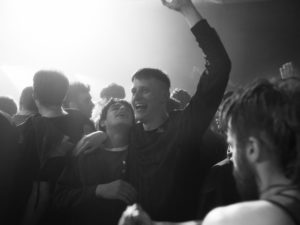
This recent Scottish film, set in 1994, is effectively a period drama. A coming of age story following two teenage best friends, the plot revolves around attending their first rave at a secret location somewhere in Scotland’s post-industrial central belt, amid the threat of police clampdowns emboldened by the 1994 Criminal Justice Act. Reworked for the screen from Kieran Hurley’s play, which was originally performed at Glasgow’s sadly missed Arches club, Beats gains further dance music scene credentials by virtue of its climactic rave scene, filmed at a specially organised party in a Glasgow warehouse with 1,500 extras, and with music supervision by Keith McIvor, a.k.a JD Twitch and one half of Optimo, stalwarts of the Scottish scene since the 1990s.
Available on Now TV, free with subscription.
Lovers Rock (2020, Steve McQueen)
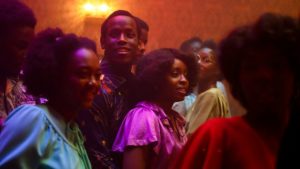
Another ‘period drama’ about partying, this time from Steve McQueen’s Small Axe series, which re-enacts the lover’s rock parties of 1970s Notting Hill and its associated sound system culture. Like Beats, this film asserts the resistant politics of partying, but not at the expense of appreciating the sheer joy of it. The film drew attention to a perhaps less widely known black Atlantic music scene and party subculture, and airing during the bleak uncertainty of November 2020’s lockdown, managed to movingly evoke the feeling of dancing in a cosily confined, non-socially distanced space.
Available to stream on BBCiPlayer in the UK, and Amazon Prime in the US.
New Order “Confusion” (music video) (1983, Charles Sturridge)
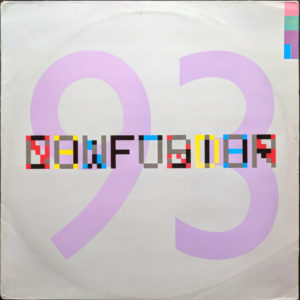 This music video accompanies a song particularly associated with Manchester’s legendary Hacienda club. Yet British director Charles Sturridge, better known for British heritage drama such as the 1981 TV adaption of Brideshead Revisited, filmed it in on location in New York City. It shows scenes of New Order rehearsing Confusion, as well as the song’s remixer Arthur Baker in the studio, intercut with street-shot scenes of the band, Baker, and some unnamed dancers getting ready for the club, hitting the street, grabbing yellow cabs and subways, and later Baker playing the remix in the now legendary club The Fun House amid the elaborate, energetic dance moves of its regular crowd. Nearly forty years on, this music video shows another example of an Atlantic exchange of dance music scenes, capturing the inexorable circular links between the music, the studio, the club, and the city, and providing an incredibly vivid window onto past parties in an endearingly scruffy, seedy 1980s New York.
This music video accompanies a song particularly associated with Manchester’s legendary Hacienda club. Yet British director Charles Sturridge, better known for British heritage drama such as the 1981 TV adaption of Brideshead Revisited, filmed it in on location in New York City. It shows scenes of New Order rehearsing Confusion, as well as the song’s remixer Arthur Baker in the studio, intercut with street-shot scenes of the band, Baker, and some unnamed dancers getting ready for the club, hitting the street, grabbing yellow cabs and subways, and later Baker playing the remix in the now legendary club The Fun House amid the elaborate, energetic dance moves of its regular crowd. Nearly forty years on, this music video shows another example of an Atlantic exchange of dance music scenes, capturing the inexorable circular links between the music, the studio, the club, and the city, and providing an incredibly vivid window onto past parties in an endearingly scruffy, seedy 1980s New York.
YouTube: https://youtu.be/c_L_-CKg6pw
___
Bio: Nessa Johnston is Senior Lecturer in Media, Film and Television at Edge Hill University, UK. She is co-investigator with Jamie Sexton (Northumbria University) on the Leverhulme project, Anonymous Creativity: Library Music and Screen Cultures in the 1960s and 1970s, and author of the forthcoming monograph The Commitments: Youth, Music and Authenticity in 1990s Ireland (Routledge, 2021).
